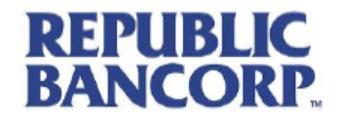off-balance sheet credit exposures, respectively. Management evaluates the adequacy of the ACLL monthly, and the adequacy of the ACLS and ACLC quarterly. All ACLs are presented and discussed with the Audit Committee and the Board of Directors quarterly.
Effective January 1, 2020, the Company adopted ASC 326 Financial Instruments – Credit Losses, which replaces the pre-January 1, 2020 “probable-incurred” method for calculating the Company’s ACL with the CECL method. CECL is applicable to financial assets measured at amortized cost, including loan and lease receivables and held-to-maturity debt securities. CECL also applies to certain off-balance sheet credit exposures.
When measuring an ACL, CECL primarily differs from the probable-incurred method by: a) incorporating a lower “expected” threshold for loss recognition versus a higher “probable” threshold; b) requiring life-of-loan considerations; and c) requiring reasonable and supportable forecasts. The Company’s CECL method is a “static-pool” method that analyzes historical closed pools of loans over their expected lives to attain a loss rate, which is then adjusted for current conditions and reasonable and supportable forecasts prior to being applied to the current balance of the analyzed pools. Due to its reasonably strong correlation to the Company's historical net loan losses, the Company has chosen to use the U.S. national unemployment rate as its primary forecasting tool.
In accordance with the adoption of ASC 326 and CECL, the Company recorded on January 1, 2020 a $6.7 million, or 16%, increase in the ACLL for its loans, a $51,000 ACLS for its investment debt securities, and a $456,000 ACLC for its off-balance sheet credit exposures. Of the $6.7 million increase in ACLL, approximately $1.4 million was a gross-up reclassification of non-accretable discount on previously-PCI, now-PCD loans, and the remaining $5.3 million was a difference in ACL between CECL and the probable-incurred method. The Company also made a cumulative effect entry of $4.3 million to reduce its opening balance of retained earnings upon adoption of ASC 326, with no impact on 2020 earnings for these adoption entries. The adoption date increase in ACLL for the Company’s loans primarily reflects additional ACLL for longer duration loan portfolios, such as the Company's residential real estate and consumer loan portfolios. No additional segmentation of the Bank's loan portfolios was deemed necessary upon adoption.
See additional detail regarding the Company’s adoption of ASC 326 and the CECL method under Footnote 1 “Basis of Presentation and Summary of Significant Accounting Policies” of Part I Item 1 “Financial Statements.”
The Company’s ACLL increased $17 million from $43 million at December 31, 2019 to $60 million at September 30, 2020. As a percent of total loans, the total Company’s ACLL increased to 1.20% at September 30, 2020 compared to 0.98% at December 31, 2019. An analysis of the ACL by reportable segment follows:
Traditional Banking segment
The Traditional Banking ACLL increased $20 million to $49 million at September 30, 2020, driven partially by the Company’s January 1, 2020 CECL adoption entry of approximately $7 million and partially by approximately $18 million of reserves for the expected impact of the COVID-19 pandemic, which primarily included the following considerations:
| o | the pandemic’s impact on national unemployment; |
| o | an analysis of loans to industries more directly harmed by the pandemic, such as the hospitality industry; |
| o | the number and amount in loans receiving pandemic related accommodations from the Bank; and, |
| o | a forecasted rise in vacancy rates for CRE within the Traditional Bank’s market footprint. |
Offsetting the increase in the ACLL due to the pandemic was a reduction in the ACLL of approximately $3 million driven by a $254 million decrease in non-PPP Traditional Bank period-end balances from January 1, 2020 to September 30, 2020. The Traditional Bank ACLL to total Traditional Bank loans increased 48 basis points to 1.26% when comparing September 30, 2020 to December 31, 2019.
Following the Company’s $51,000 ASC 326 adoption entry on January 1, 2020 establishing an ACLS for its debt securities, the Company increased its ACLS $296,000 during the first nine months of 2020 to $347,000 based on higher PD and LGD expectations on its corporate bond portfolios. These higher PD and LGD expectations generally reflect economic concerns from the COVID-19 pandemic.
Following the Company’s ASC 326 adoption entry on January 1, 2020 for an ACLC on its off-balance sheet credit exposures of $456,000, the Company increased its ACLC $467,000 during the first nine months of 2020 to $923,000 at September 30, 2020. The higher ACLC at September 30, 2020 reflects higher assumed usage rates on outstanding lines and higher assumed loss rates on credit converted balances over their expected lives. The ACLC is recorded on the liability side of the balance sheet, with any provision for loss recorded within other noninterest expense.
